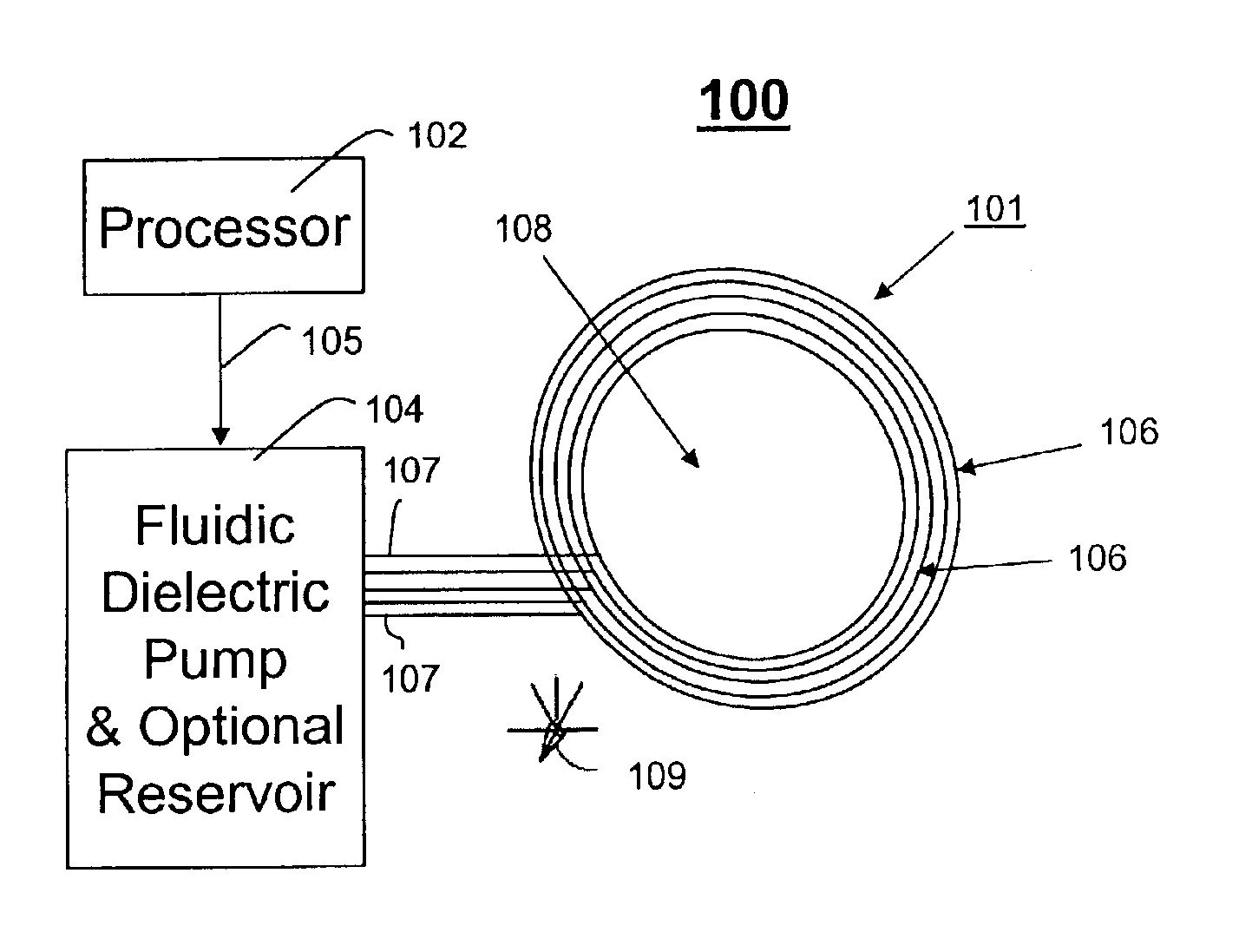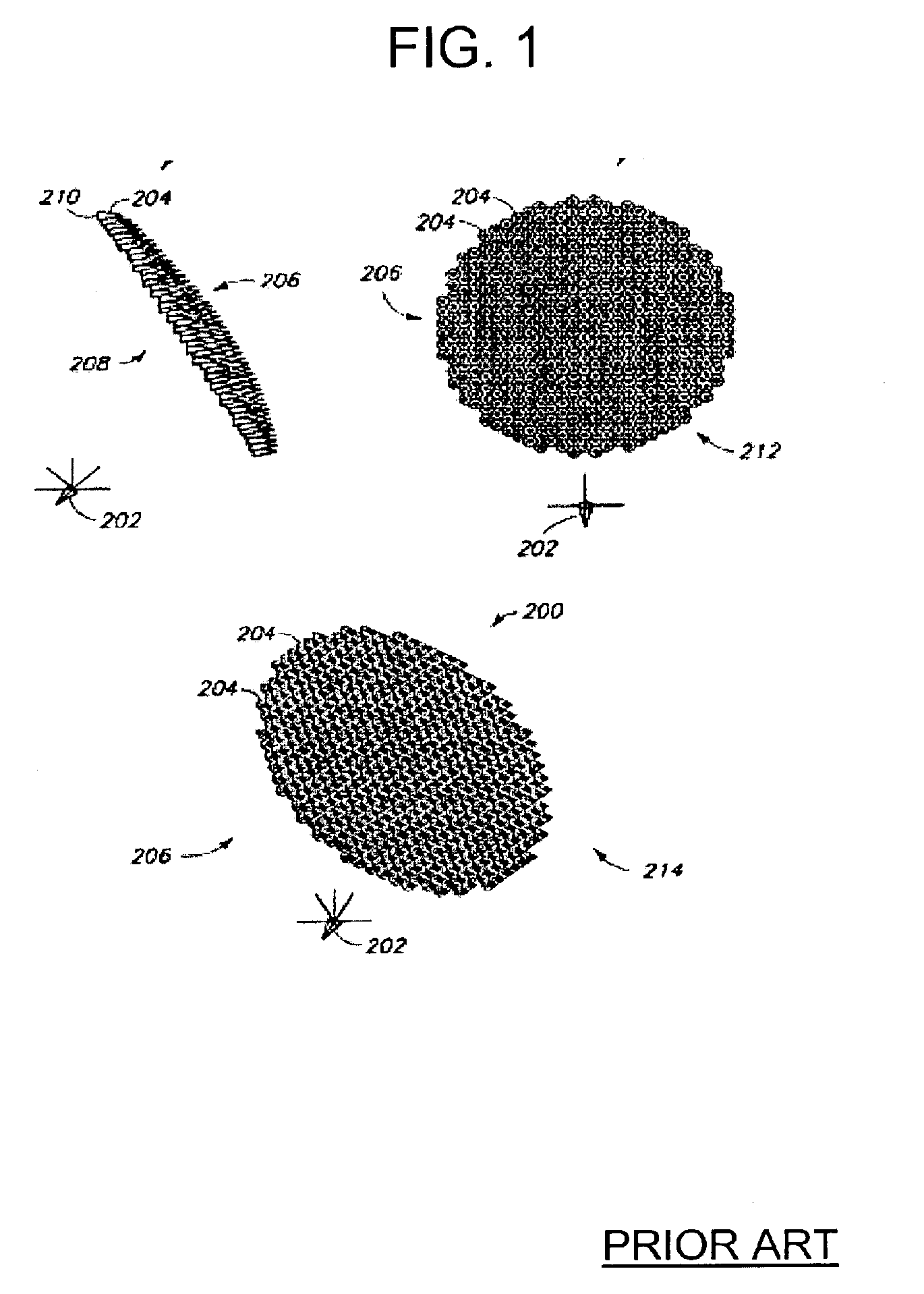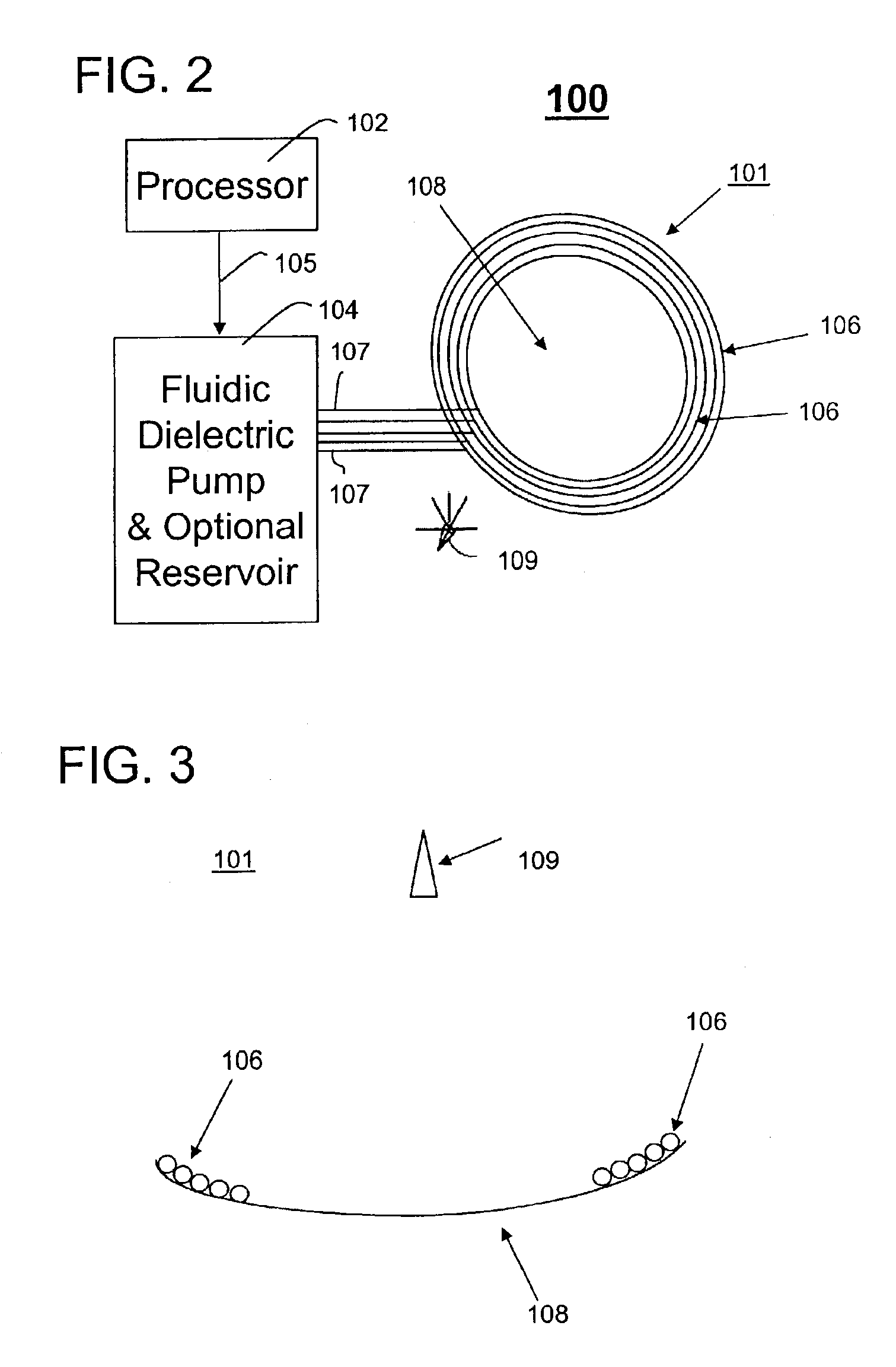Taper adjustment on reflector and sub-reflector using fluidic dielectrics
- Summary
- Abstract
- Description
- Claims
- Application Information
AI Technical Summary
Benefits of technology
Problems solved by technology
Method used
Image
Examples
Embodiment Construction
Although the antenna of FIG. 1 provides more flexibility than a conventional satellite reflector antenna, it is the ability to vary the dielectric value of a reflective element in the antenna of the present invention that enables it to be used in more than just a particular application or operating range without the complexities of a complete array of reflective elements. Reflectors and sub-reflectors in prior antennas all have static or fixed dielectric values. In contrast, the present invention utilizes a fluidic cavity or cavities as shall hereinafter be described in greater detail to provide even greater design flexibility for an antenna capable of further applications and wider operating ranges that further overcomes the detriments associated with side lobes.
Referring to FIGS. 2 and 3, a schematic diagram of an antenna system 100 using a reflector unit 101 having at least one cavity (and in this embodiment a plurality of cavities 106) that can contain at least one fluidic diele...
PUM
 Login to View More
Login to View More Abstract
Description
Claims
Application Information
 Login to View More
Login to View More - R&D
- Intellectual Property
- Life Sciences
- Materials
- Tech Scout
- Unparalleled Data Quality
- Higher Quality Content
- 60% Fewer Hallucinations
Browse by: Latest US Patents, China's latest patents, Technical Efficacy Thesaurus, Application Domain, Technology Topic, Popular Technical Reports.
© 2025 PatSnap. All rights reserved.Legal|Privacy policy|Modern Slavery Act Transparency Statement|Sitemap|About US| Contact US: help@patsnap.com



